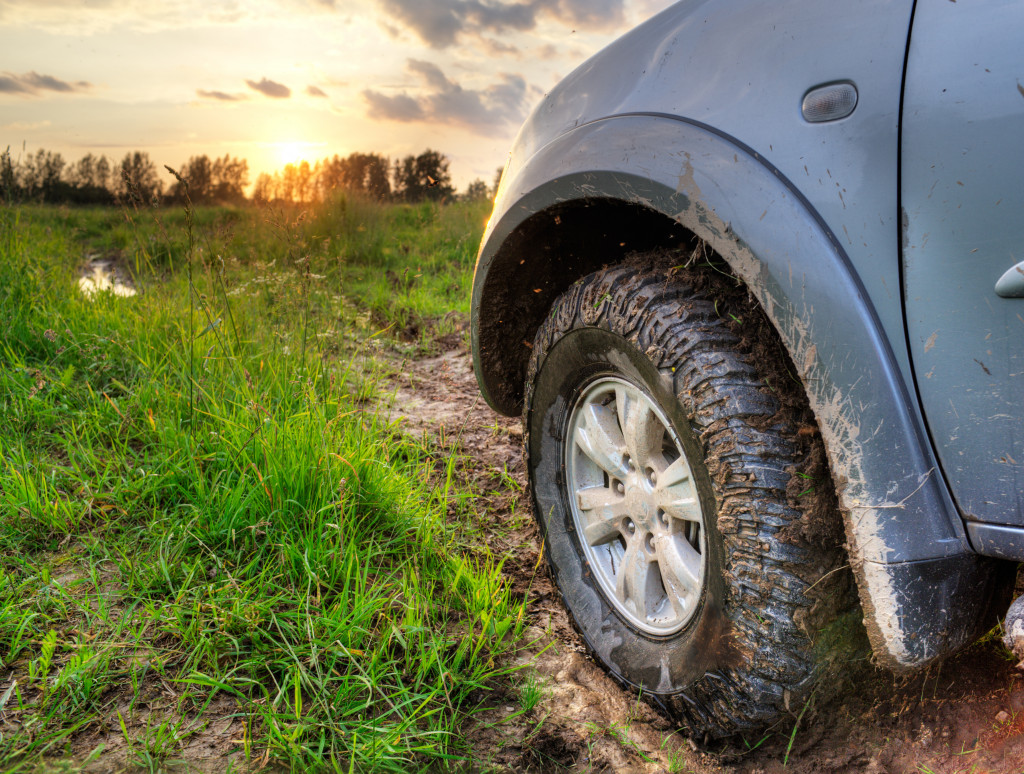Driving off-road is a very different experience from driving on pavement. While some people may feel more comfortable driving in a straight line at speed on pavement, the true off-roader revels in complex maneuvers over rugged terrain.
With these off-road driving techniques, you’ll be trail-savvy in no time.
Read the Landscape
You may have the best vehicle on this Earth, but if you are driving off-road on terrain that is too difficult for your capabilities, then you’re just asking for trouble. The first thing you need to do is assess the landscape and determine what recreational activities are possible with your current equipment.
The key to understanding the terrain you’re about to drive through is to read it. Look for features such as large or medium-sized rocks, unusually deep ruts, steep inclines and declines, protruding logs, and other apparent obstacles that may cause problems.
Pick the Right Gear
When you’re off-roading, it’s essential to be prepared for anything. The gear we’ll mention here will help ensure your safety, as well as the safety of those around you.
You should always pack at least one tow strap, even if you have 4-wheel drive. Sometimes, no matter how careful you are, things can go wrong.
Don’t forget your first aid kit. Even the most experienced off-roaders can get injured, so it’s essential to be prepared with simple supplies like bandages, alcohol wipes, gauze pads, and anything else you might need to treat minor injuries.
Bring Recovery Gear
If you are exploring the backcountry, it’s also a good idea to bring along some essential recovery gear. A tow strap can be used to get your car unstuck if it gets stuck in mud or snow or helps pull out another stuck vehicle. If you have someone with you who isn’t familiar with off-roading, they may need to be pulled out of a bad situation.
If possible, pack a shovel and some tow straps with your recovery gear. If you can dig yourself out of some nasty mud pits, it will save time and energy later down the road.
Find Traction
When you’re driving through rough, muddy terrain, it can be difficult to maintain traction on the ground. It’s essential to stay as low as possible and look for spots where other vehicles have traveled.
If you do get stuck or slide off a steep incline, first try doing a few reverse figure-eights until your tires pick up some compacted mud underneath. This can be a great way to get out of sand or mud holes.
If your tires are still spinning, look for rocks sticking out of the ground or shallow inclines that you can use to drive up into. It’s also possible to use sand ramps if you’re stuck in the sand, but these can be unstable and dangerous, so use them sparingly or not at all.
If you’re up for an extra challenge, try using low range to drive up steep hills by using engine braking as your primary source of momentum. The key is to keep the wheels spinning as you gain elevation; if you stop, likely, your wheels will simply slide back down the hill, so be prepared to increase engine speed if you find yourself losing traction. Be extremely careful when doing this!
One last advanced tip: If you’re stuck in sand or mud and need to get out quickly, it’s possible to shift into a 4-wheel drive high range or lock your transfer case into a 4-wheel drive. This will allow you to use all four wheels simultaneously, which can help increase traction if done carefully and responsibly.
Check the Depth of Your Tires

The depth of your tires can be a factor in off-roading, especially when you’re in deep mud or water. Don’t forget to check the tire pressure and consider whether it needs to be adjusted before hitting the trail. Have a Subaru mechanic check your tires if you’re not sure how much air pressure they should have.
It’s also a good idea to check the tread on all four of your tires and rotate them if necessary. There should be no cuts or deep gashes in the rubber, and there shouldn’t be any bulges.
If your tires are too full, they will ride higher on the ground and increase the likelihood of hydroplaning. A tire that’s too full can also rub against your wheel well, causing damage to your car and possibly affecting its handling.
To check the pressure, look for a sticker inside your driver-side door or use an air gauge to see how much pressure is in each tire. You can usually turn a small knob or screw on the tire valve if you need to adjust it. This will affect how fast your tire fills up with air when using a compressor for a fill-up.
Know Your Angles
When off-roading and climbing hills and inclines, you’ll want to keep in mind the various angles of your car. Even if you’re used to driving on flat ground, it can be challenging to get used to off-roading when all four wheels work together to move at different angles.
The front tires will usually be angled slightly inward to provide better traction when climbing hills. However, the rear tires are generally curved to the outside of the car to allow them to provide torque during acceleration or tight turns.
Remember: practice and patience can help you overcome any difficulties with driving in the dirt. With a few simple tips and tricks, you’ll be well on your way to a great off-road experience.

